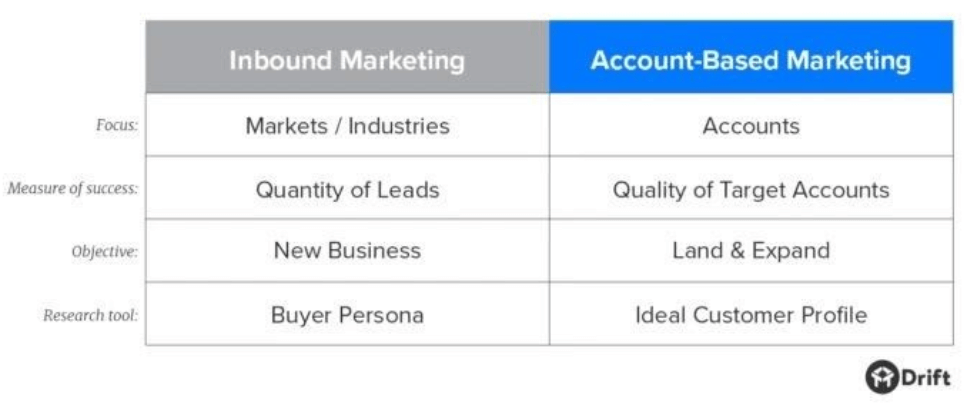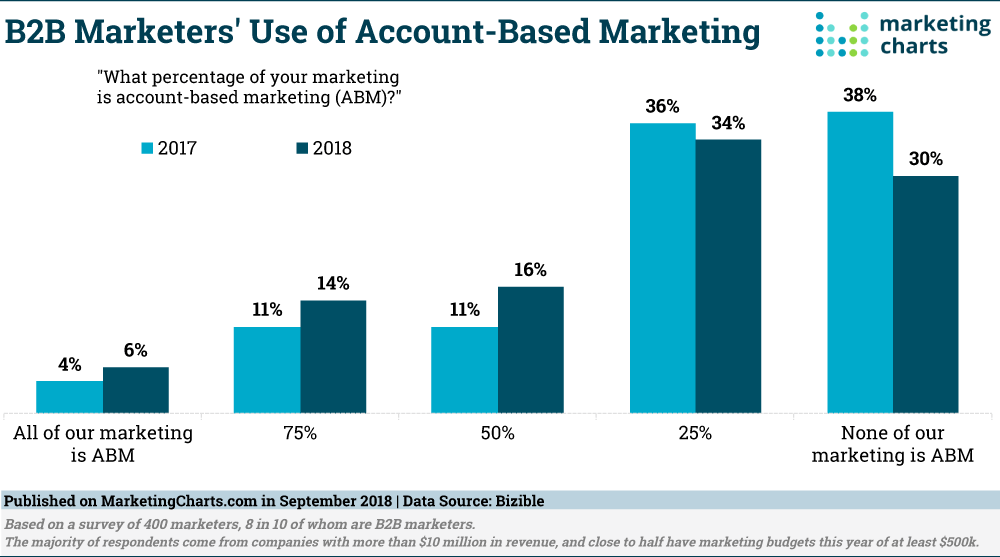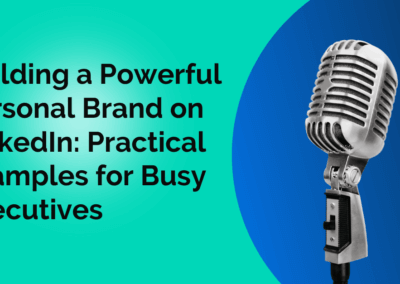In an industry loaded with buzzwords, it can be tough to determine which ones will fade into obscurity and which will shake up the whole B2B world. In case you haven’t noticed by now, account-based marketing, or ABM, falls into the latter category.
While it’s been a go-to strategy for quite some time, it’s picked up a lot of steam in recent years. In 2018, the ABM Leadership Alliance reported that 80% of survey respondents were less than two years into their ABM implementation. And 99% of marketers reported more significant ROI from their ABM programs than their other marketing strategies.
This strategy takes a B2B company’s marketing resources and applies them to its target accounts, rather than an all-encompassing marketing strategy. Information Technology Services Marketing Association, or ITSMA, coined the phrase in 2004, defining it merely as “treating individual accounts as markets in their own right.”
How ABM works the Inbound Methodology
Fundamentally, the inbound methodology is about adding value and helping buyers identify and solve problems. This methodology can be used with ABM, taking a highly targeted approach. It can be very content-focused, creating highly personalized content for a very defined market segment. Its main objective is to create high-quality content that’ll have prospects seeking you out. ABM, however, is focused on targeting specific prospects and existing accounts. Its purpose isn’t to replace your overall, broader marketing strategy—it supplements it.

Image: Drift.com
Sam Balter, a senior marketing manager at HubSpot, points out that many aspects of ABM incorporate inbound marketing—that ABM can be used to build better relationships with target accounts.

Why ABM?
Account-based marketing can have a significant impact on businesses targeting niche markets with a high average deal size. HubSpot’s nailed down six of ABM’s huge benefits:
Personalization yields better return on marketing efforts
One of the biggest struggles for marketers is the attempt to appeal to such a wide range of potential buyers. When it comes to ABM, though, you’re narrowing the pool down. Then, you’re able to tailor the experience to each lead.
It’s easier to see the return on investment
The optimistic ROI is such a massive draw to ABM, and it makes sense that you want to see the results. When you’re implementing an ABM campaign, you’re able to determine how much new business is a result of that campaign specifically, and whether it’s worth continuing.
You spend less time on marketing campaigns that don’t yield new business
An asset of seeing that ROI in cold hard numbers is that you quickly learn what’s worthy of your time, money, and energy. According to HubSpot, “ABM is like an insurance policy for your team!”
With the right targeting, sales cycles should decrease
The sales cycle is a necessary evil in marketing, but we all wish it could be a little shorter, right? Well, in ABM, you’re targeting prospects that are more likely to cruise through the process. So then, you can focus that energy that you would typically spend nurturing, pursuing new leads.
It fortifies your relationship with existing clients
A good relationship with a client is the unsung hero of the marketing world. It’s no secret that people want to feel a more personal connection with people with whom they’re working. Not only does this keep you in tune with their ever-changing needs, but it’s also how you get renewals and referrals.
It quickly aligns your sales and marketing teams
Have we told you how much we love a proper alignment between sales and marketing yet? Read on!
Sales and marketing alignment
An essential tenet of ABM is creating alignment between sales and marketing. The process of creating an ABM strategy itself is likely to develop a bond between the two teams working on it. After all, it’s beneficial for both sides—as well as the client!
In the words of Megan Golden on LinkedIn:
“At a more granular level, ABM is a win-win-win for sales, marketing, and customers. ABM perfectly complements the account-based approach sales teams have embraced for years. With the dedicated involvement of marketing, sales teams can better personalize their outreach. Nurturing targeted members of the buying committee with appropriate marketing messages tends to speed up the sales process, allowing sales to achieve better close rates while closing bigger deals faster.”

Image: MarketingCharts
The adoption of account-based marketing
Marketing Land suggests a big reason that a lot of B2B companies are dragging their feet when it comes to implementing an ABM strategy is the fear that doing so will require a giant restructuring of the organization’s marketing strategy and team.
Sure, change is scary, especially when it disrupts something you’ve been doing for years that’s been working fine. But why stick with something that works fine when you can try a strategy that’s known to produce better results?




